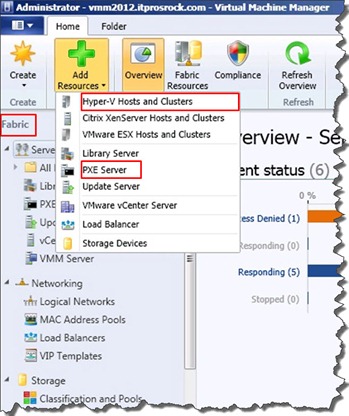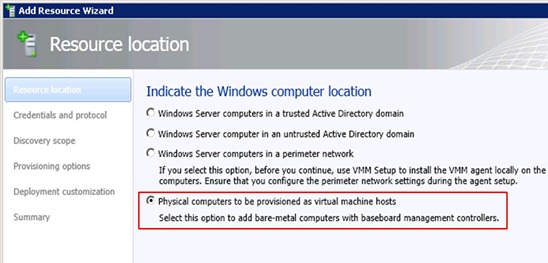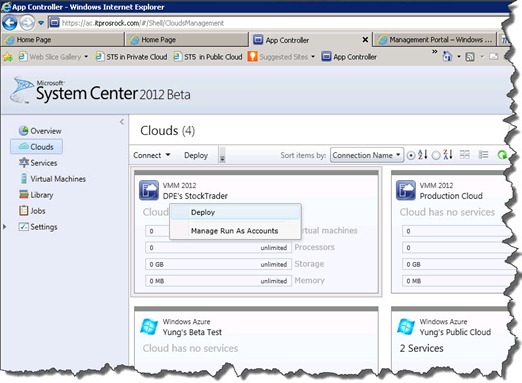From Bare Metal to Private Cloud, System Center VMM 2012 Delivers
Today cloud computing facilitated by virtualization continues emerging as the service delivery vehicle for IT to shorten go-to-market while facing unpredictable data patterns and workloads. The increasing complexities and growing user expectations make system management on the center stage of a cloud computing solution. In addition to automation, we now need a self-service model to fundamentally reduce the cost structure of required training and on-going maintenance. Besides processes and procedures, we now need work-flows and orchestration. The requirements for a management solution are now the abilities to identify and manage resources deployed to heterogeneous virtualization platforms in hybrid scenarios of cloud computing with predictability and repeatability. A single and unified platform with a consistent user experience to manage all IT resources including physical, virtualized, private cloud, and public cloud resources becomes critical for increasing efficiency and reducing TCO at the same time. From a deployment point of view, the abilities to deploy: OS to bare metal, virtual machines to virtualization host groups, and services to a private cloud signify the arrival of deployment as a service. And VMM 2012 implements and proves this concept.
In addition to automation, we now need a self-service model to fundamentally reduce the cost structure of required training and on-going maintenance. Besides processes and procedures, we now need work-flows and orchestration. The requirements for a management solution are now the abilities to identify and manage resources deployed to heterogeneous virtualization platforms in hybrid scenarios of cloud computing with predictability and repeatability. A single and unified platform with a consistent user experience to manage all IT resources including physical, virtualized, private cloud, and public cloud resources becomes critical for increasing efficiency and reducing TCO at the same time. From a deployment point of view, the abilities to deploy: OS to bare metal, virtual machines to virtualization host groups, and services to a private cloud signify the arrival of deployment as a service. And VMM 2012 implements and proves this concept.
Deployments, from bare metal to a service to a target private cloud, can now be available on demand with VMM2012 private cloud fabric. And IT professionals must recognize that it is no longer about configuring servers and setting up networks, it is all about delivering a requested application to target users on demand, i.e. as a service, with security and governance to timely and even proactively respond to a market opportunity.
VMM 2012 introduces the concept of private cloud fabric. When adding a Hyper-V host to fabric from the admin console of VMM 2012, as shown above, one noticeable option is to provision a physical computer as highlighted below.
This capability enables VMM 2012 to identify hardware, install OS, enable Hyper-V role, and add the machine to a target host group with streamline operations in a highly automated fashion. VMM 2012 can now deploy an application as a service to a target private cloud on demand by applying an associated service template, so long a request is within its SLA and the authorized and available physical capacities are sufficient.
Notice that PXE capability plays a key role and is an integral component of the Server pool, one of the three resource pools encompassing private cloud fabric. PXE servers are to be put in place as part of remote management infrastructure to support bare metal deployment. Target hardware will need to have Baseboard Management Controller (BMC) supporting an out-of-band management protocol like IPMI, DCMI, or SMASH. The hardware specifications for remote management are beyond the scope of this article. They are briefly mentioned here for completeness.
Deploying Service to Private Cloud
In VMM 2012, deployment operations are amazingly simple. To deploy an application architecture with a running instance of a target application as a service to a target private cloud can now be simplified and easily carried out with a few mouse-clicks from with VMM 2012 admin console or System Center App Controller 2012. The below screen capture shows a self-service user using App Controller to deploy StockTrader as a service to a target private cloud. The magic is in the so called Service Template. The concepts, processes, and operations to deploy a Service Template is detailed in part 3 of the blog post series, System Center Virtual Machine Manager (VMM) 2012 as Private Cloud Enabler.
Beginning of ITaaS
There is no doubt that from bare metal to a private cloud, a management platform like VMM 2012 offers many advantages including simplicity in operations, consistency in user experience, predictability of a deployment to increase IT efficiency and reduce TCO at the same time in the long run. In this article, I single out VMM 2012 since it is an enabler of private cloud and covers much of infrastructure management. Let's however be clear. A comprehensive and agile private cloud solution must address the entire subject domain of system management in cloud computing. And that encompasses application management, service delivery automation, and infrastructure management. To form a comprehensive management solution, there are additional components in System Center 2012 including: Configuration Manager, Data Protection Manager, Operation Manager, Orchestrator, Service Manager, etc. to fully address all three areas. VMM 2012 is nonetheless a strategic starting point, a beginning of the long-waited delivery of IT as a Service.
[This is a cross-posting from https://aka.ms/yc.]


